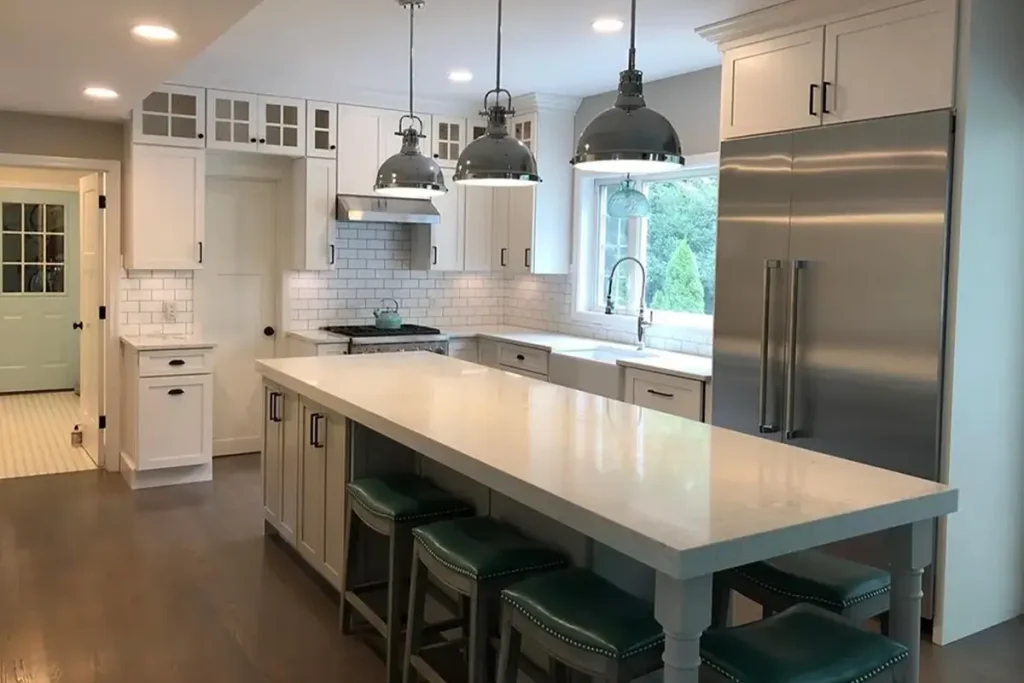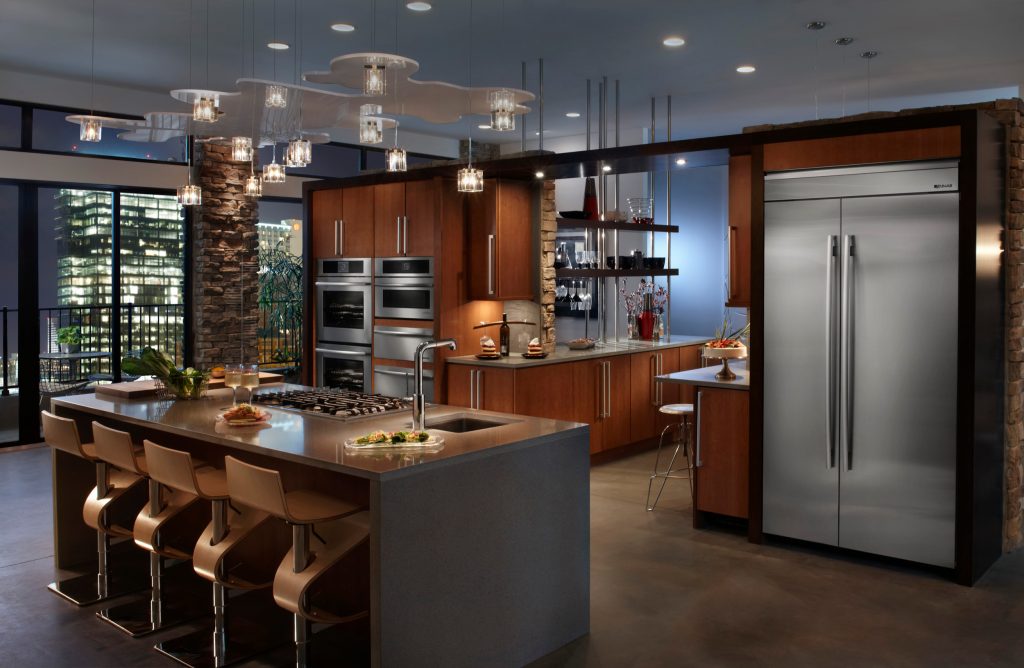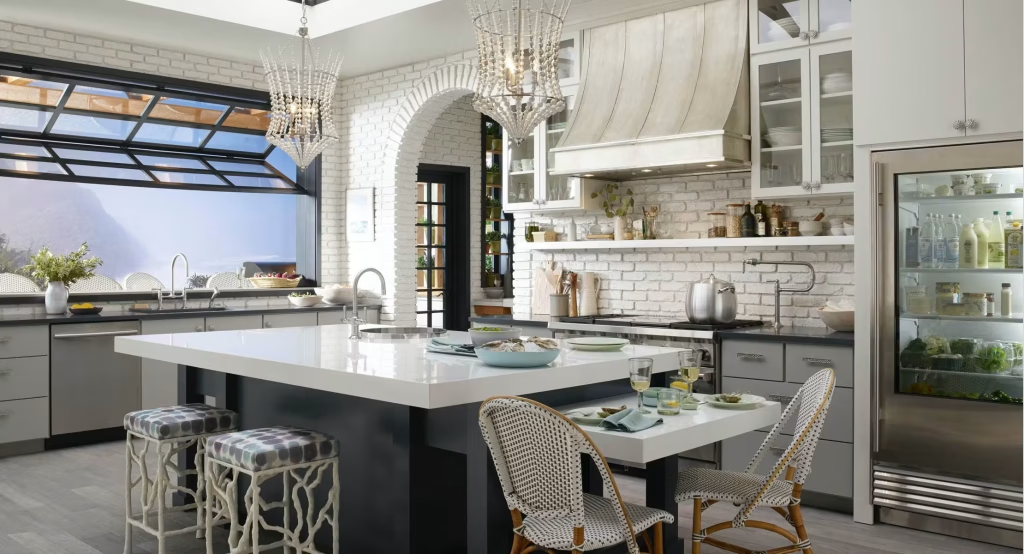In contemporary kitchen design, few features are as impactful — both aesthetically and functionally — as the kitchen island. Once a simple prep surface, the kitchen island has evolved into a multi-functional powerhouse that anchors the entire space. From cooking and dining to storage and socializing, today’s kitchen islands are designed to do it all.
As open-concept living continues to dominate home layouts, multi-functional islands have become the essential centerpiece, balancing beauty and practicality in a single, versatile structure.
The Evolution of the Kitchen Island

Historically, islands served as auxiliary prep stations. But with changing lifestyles, especially in homes that blur the lines between kitchen and living spaces, islands have taken on expanded roles. No longer just a place to chop vegetables, a modern kitchen island might house a sink, a cooktop, a wine fridge, bar seating, charging stations, or even a built-in bookshelf.
This evolution reflects the kitchen’s transition into a multi-use hub — for cooking, working, gathering, and relaxing.
Key Functions of a Modern Kitchen Island
1. Food Prep Station
- With expansive countertop space, islands provide an ideal area for chopping, mixing, and organizing ingredients.
- Many include butcher blocks, built-in cutting boards, or integrated knife storage.
2. Cooking Zone
- Some islands feature built-in cooktops, downdraft vents, or even ovens.
- This setup allows the cook to face the room, encouraging interaction with family and guests.
3. Cleaning Zone
- Integrating a sink and dishwasher transforms the island into a cleaning hub.
- Dual sinks can also support separate prep and clean-up stations for greater efficiency.
4. Dining and Seating Area
- Extended countertops or waterfall edges can accommodate bar stools, turning the island into a casual dining space.
- Ideal for quick meals, kids’ homework, or entertaining guests while cooking.
5. Storage Powerhouse
- Islands often house deep drawers, cabinets, and open shelving for storing cookware, small appliances, or tableware.
- Pull-out trash and recycling bins help keep the kitchen organized and clutter-free.
6. Home Office or Tech Hub
- With power outlets, USB ports, and space for laptops, the island becomes a perfect work-from-home or study area.
- Some homeowners even install pop-up charging stations or hidden screens for multimedia use.
7. Social Gathering Spot
- The island naturally draws people in, becoming the focal point during parties or family gatherings.
- With the right lighting and seating, it can function as both a prep space and a conversation zone.
Design Considerations for Multi-Functional Islands

1. Size and Scale
- An island should be proportional to the kitchen’s size. Too small and it limits function; too large and it disrupts flow.
- Leave at least 36–48 inches of clearance around all sides for comfortable movement.
2. Layout and Workflow
- Follow the kitchen work triangle (sink, stove, refrigerator) when placing key appliances on or near the island.
- Ensure zones don’t overlap in ways that cause congestion, especially in busy households.
3. Storage Strategy
- Customize cabinets and drawers based on your needs: pull-outs for pots and pans, dividers for utensils, or open shelves for cookbooks.
- Consider dual-access storage for accessibility from multiple sides.
4. Materials and Finishes
- Use durable materials like quartz, granite, or butcher block for countertops.
- Consider contrasting colors or textures to make the island stand out as a statement piece.
5. Lighting and Electrical
- Pendant lights or recessed lighting enhance both function and ambiance.
- Include ample outlets for small appliances, tech, or task lighting.
Customization Ideas

- Double Islands: In large kitchens, two islands can separate prep and dining functions entirely.
- Mobile Islands: Smaller, wheeled islands offer flexibility in compact spaces.
- Tiered Surfaces: Split-level designs can visually separate cooking from eating zones.
- Hidden Features: Slide-out tables, retractable cutting boards, or built-in compost bins add clever functionality.
Final Thoughts
A multi-functional kitchen island is more than just a piece of furniture — it’s a lifestyle upgrade. By combining smart design with purposeful features, the island becomes a dynamic centerpiece that enhances efficiency, fosters connection, and reflects personal style.
Whether you’re renovating your kitchen or building a new one, investing in a thoughtfully designed island can transform the way you cook, live, and gather in your home.
